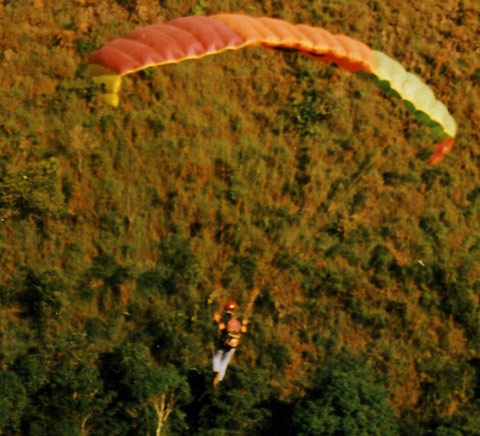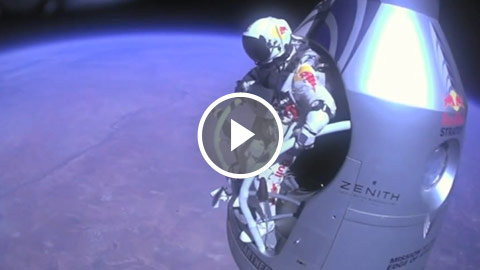In my twenties I loved to paraglide. Running off cliffs in Caracas and San Francisco was a way to experience the unparalleled sensation of flying without a motor, in gentle and exhilarating oneness with nature. So a few days ago, I naturally watched in awe as a man dressed in a pressure suit got into a helium balloon and floated 24 miles up into the Earth’s stratosphere to jump into the abyss. Ten minutes later, Felix Baumgartner smoothly returned to Earth, having set the record for highest manned balloon flight, highest parachute jump, and fastest free fall velocity in the process.
What impressed me almost as much as Baumgartner’s bravery was the marketing campaign that Red Bull so cleverly built around it. They sponsored the event in the typical way you would expect: the capsule that Baumgartner jumped from was branded with Red Bull’s logo. So too was his helmet, his suit, his parachute. However, what really took off was Red Bull’s YouTube livestream of the event that broke the record for concurrent livestreams: more than 8,000,000 people watching at once. The company’s Facebook page garnered a quarter million likes and 10,000 comments within 40 minutes, while the event dominated Twitter’s worldwide trending topics. The event was picked up live on more than 40 TV stations, all trumpeting Red Bull’s message of extreme energy.
This was marketing, sponsorship, and social media woven together in one of the boldest event ever. As the Huffington Post declared the next day: “One small jump for Red Bull, one giant leap for business marketing.” The question I found myself pondering in the aftermath was not whether I wanted to run out and buy a Red Bull, but rather what can social and environmental innovators working on some of the most exciting solutions on the planet learn from this? Here are my five takeaways:
1) Find an event that embodies your message – or a sponsor that embodies your event
Red Bull stands for Improved Performance. They have a tradition of associating themselves with extreme sports, and the power of the jump is that it precisely embodies their brand message. This is not about their product or who they are, but rather what they stand for, which is something that their audience cares deeply about.
Trying to address social inequalities, global warming, or other important issues may not lead you to extreme sports, but take a close look at what you stand for and what your audience cares about. What do your potential partners stand for? How can your activities and theirs be leveraged for good?
2) If you are resource-constrained, look for alternate avenues of exposure
What do you do without the marketing budgets to go toe for toe with Coca-Cola, Budweiser, Gillette, or any other big brand that can drop millions of dollars for a 30-second time slot at the Super Bowl? Look for places that can generate extreme value for you but are not as expensive because other people simply haven’t thought to look there yet. As an energy drink, Red Bull has a history of associating itself with extreme sports events, which initially were less expensive to sponsor because they’re on the fringes of mainstream sports. In that same way, nonprofits and purposeful businesses need to ask what are the untapped opportunities that align with their messages and that they can leverage to gain support for their missions. Forbes estimated that Red Bull Stratos delivered tens of millions of dollars of global exposure to the Red Bull brand, all in a marketing space that no one is competing for.
3) Expand your impact via film
Events unfold in real time, and part of the excitement is seeing them before they become headlines in a newspaper. In this day and age, that means film. You can livestream an event through Youtube. You can also create short films to distribute through Youtube and other mediums after the fact. Or you can do both, as Red Bull did, releasing coverage in real time through livestreaming, then breaking that livestream up into effective short films.
4) Create a unique channel for the series to live on
One of the things Red Bull did so well with Red Bull Stratos was that, in addition to the live coverage, the Facebook and the Twitter marketing, and their YouTube channel, they created a website for the event to live on leading up to and after the actual jump. When considering events like this yourself, keep in mind that you don’t have to create an independent website for the event, as Red Bull did. It can simply be a section of your website. The important part is to have a place specifically devoted to the event.
5) Reach out to a targeted list of bloggers
Ten years ago bloggers responded to mass media. In this day and age, mass media reaches out to bloggers and increasingly looks to them for stories. Take advantage of this trend and fortify relationships with key voices in the space you’re targeting. Sure, some of social media is spontaneous. Much of it, however, is driven by key thought leaders that can propel something into the spotlight, at which point the viral effect takes over.


